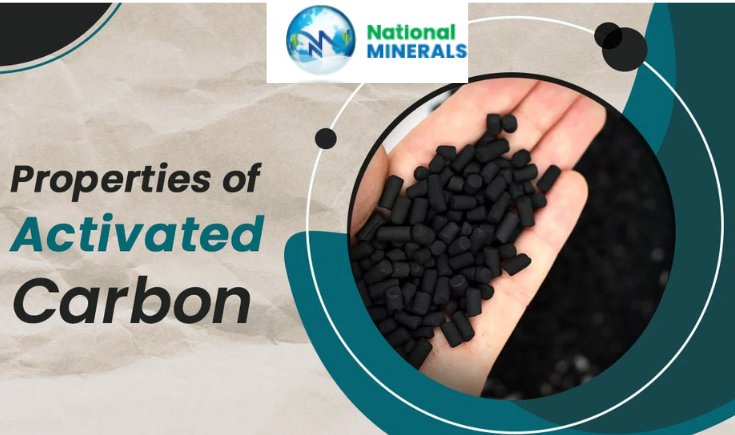Activated carbon, renowned for its exceptional adsorptive properties, plays a pivotal role in numerous industries, including water purification, air filtration, and chemical processing. While traditional sources like coal, wood, and coconut shells are well-known, the quest for sustainability and efficiency has led to
the exploration of alternative sources of activated carbon.
In this article, we delve into these alternative sources, highlighting their benefits and potential applications.
1. Agricultural By-Products
Agricultural by-products are gaining traction as viable sources of activated carbon. These materials are abundant, cost-effective, and environmentally friendly. Some notable examples include:
-
Rice Husk:
A by-product of rice milling, rice husk is rich in silica and carbon,
making it an excellent precursor for activated carbon production By National Minerals.
Its high porosity and large surface area enhance its adsorptive capacity. - Bagasse: The fibrous residue left after sugarcane processing, bagasse is another promising material. It is primarily composed of cellulose, hemicellulose, and lignin, which contribute to its high carbon content and adsorptive properties.
-
Fruit Pits and Shells:
Pits and shells of fruits like olives, apricots, and walnuts are also utilized. These materials are not only sustainable but also offer superior hardness and
low ash content in the resulting Activated Carbon Suppliers In India.
2. Industrial By-Products
Industrial by-products, often considered waste, are being repurposed for Activated carbon production. This approach not only reduces waste but also offers an economical source ofhigh-quality activated carbon Provided By National Minerals In India
- Petroleum Coke: A by-product of oil refining, petroleum coke is rich in carbon and can be activated to produce carbon with high surface area and pore volume.
- Paper Mill Sludge:The sludge from paper mills, which contains cellulose fibers, can be converted into activated carbon, providing an innovative solution for waste management and resource recovery.
3. Biomass and Organic Waste
The use of biomass and organic waste aligns with the principles of a circular economy, turning waste into valuable resources.- Sewage Sludge: Treated sewage sludge is a potent source of activated carbon, offering an eco-friendly disposal method while producing a material with good adsorptive characteristics.
- Animal Bones:Bone char, derived from animal bones, is a type of activated carbon used in sugar refining and water purification. It has a high calcium content, which enhances its adsorptive properties for certain applications.
4. Synthetic Materials
Recent advancements in material science have led to the development of synthetic activated carbons. These materials are engineered to have specific properties tailored to particular applications.-
Polymeric Resins: Synthetic resins can be carbonized and activated to produce highly uniform and consistent Activated Carbon Distributor In India . This type is often used in applications requiring precise adsorptive characteristics.
- Carbon Nanotubes and Graphene: TThese advanced materials offer exceptional surface area and adsorption capacity. While still in the research and development phase for large-scale production, they hold promise for future applications in high-tech industries.
Benefits of Alternative Sources
Utilizing alternative sources for activated carbon production offers several benefits:- Sustainability: Many of these sources are renewable and help in waste reduction, contributing to a more sustainable production process.
- Cost-Effectiveness: Abundant and often cheaper than traditional sources, alternative materials can reduce production costs.
- Enhanced Properties: Some alternative sources provide activated carbon with superior properties, such as higher surface area, better mechanical strength, or specific adsorptive capacities.
Conclusion
The exploration of alternative sources for activated carbon production is not only a testament to innovation in material science but also a step towards sustainable industrial practices. By leveraging agricultural by-products, industrial waste, biomass, and synthetic materials, we can produce high-quality activated carbon while addressing environmental concerns. As research and technology continue to advance, these alternative sources will play an increasingly vital role in meeting the growing demand for activated carbon across various industries.

